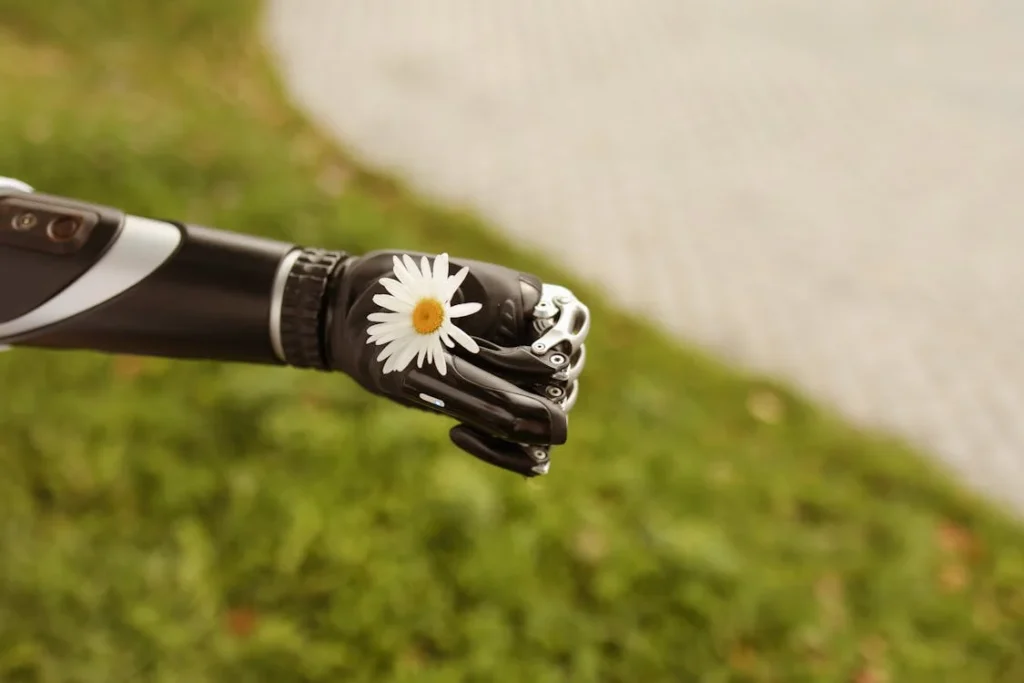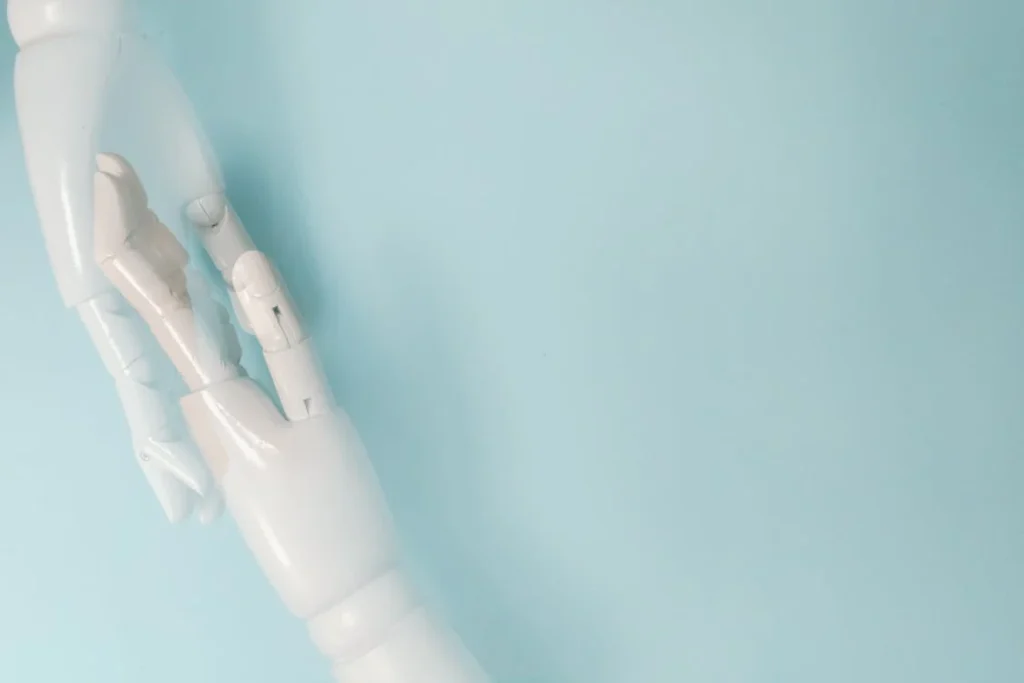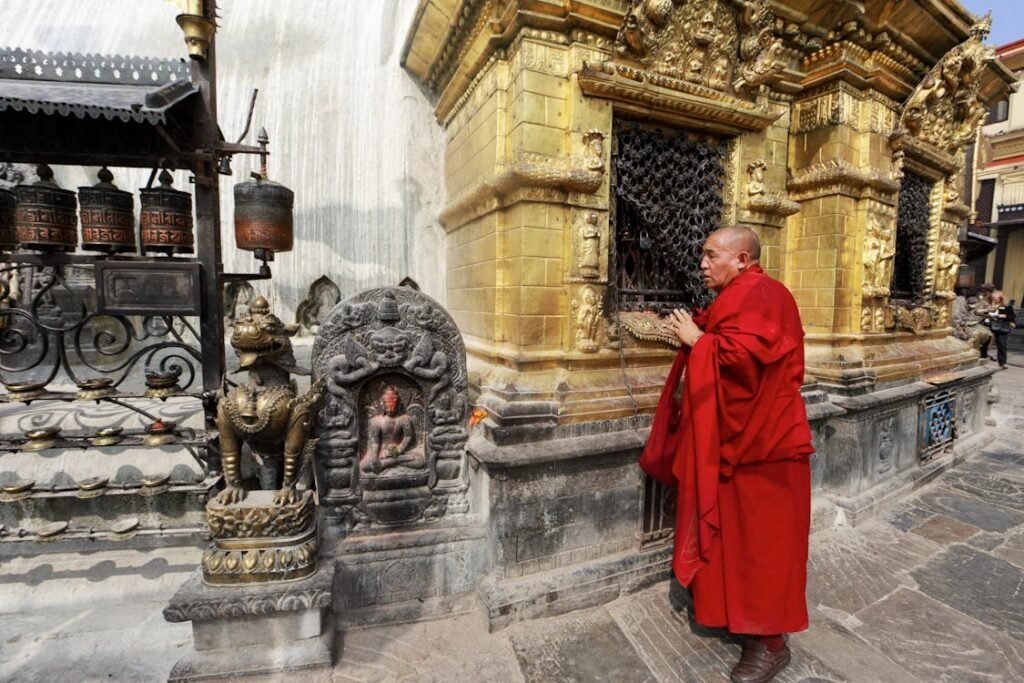Religion has always played a major role in shaping human beliefs, including how people view disabilities and prosthetics. Across different cultures, religious teachings have influenced whether disabilities are seen as a burden, a divine test, or simply a natural part of life. Some traditions promote acceptance and care for people with disabilities, while others have historically linked disability to karma, sin, or fate. These beliefs affect how societies approach accessibility, prosthetic technology, and the inclusion of disabled individuals.
As science and technology advance, attitudes toward prosthetics are also evolving. Some religious communities embrace modern solutions, seeing prosthetics as a way to restore dignity and independence. Others may struggle with the idea, questioning whether artificial limbs align with spiritual beliefs about the human body.

Disabilities in Religious Teachings: A Historical Perspective
Throughout history, religious teachings have played a key role in shaping how societies view disabilities. Many ancient texts and scriptures mention people with disabilities, often in stories of healing, divine tests, or spiritual lessons.
These narratives have influenced how different cultures treat individuals with disabilities and whether they see prosthetics as a positive development or an unnatural intervention.
Disability as a Test of Faith
In several religious traditions, disabilities have been viewed as a test of faith, both for the individual experiencing them and for the community around them.
In Christianity, stories from the Bible often depict individuals with disabilities being healed by divine intervention. These stories emphasize compassion and the idea that those with disabilities are not lesser but are instead part of a divine plan.
The Book of Job, for example, describes a man who endures suffering as a test of his faith, reinforcing the belief that disabilities can be a spiritual trial rather than a punishment.
Similarly, in Islam, disability is often seen as a test from God. The Quran teaches that all human beings are created with purpose, and those with disabilities should be treated with kindness and respect.
Islamic teachings emphasize that physical conditions should not determine a person’s worth, and that supporting people with disabilities is a moral duty.
At the same time, some interpretations suggest that disabilities are a means of earning spiritual reward, which can sometimes lead to an overly sympathetic or pity-driven approach rather than one focused on empowerment.
Karma and Rebirth in Hinduism and Buddhism
In Hinduism and Buddhism, disability has sometimes been linked to the concept of karma—the idea that a person’s actions in a past life influence their current existence.
This belief can lead to different interpretations. Some view disabilities as a consequence of past deeds, which may result in societal stigma and discrimination.
Others see disability as an opportunity for spiritual growth, emphasizing compassion and service toward those with physical challenges.
Ancient Hindu texts, such as the Vedas and the Bhagavad Gita, promote the idea that all life is interconnected, and therefore, individuals with disabilities should not be treated unfairly.
Temples and religious institutions have traditionally provided care and support for those with physical impairments. However, social attitudes influenced by karma-based thinking have sometimes created barriers, leading to exclusion or limited access to resources for disabled individuals.
Buddhism, with its focus on impermanence and acceptance, encourages seeing disability as part of the human experience rather than as punishment.
Buddhist teachings stress the importance of empathy and mindfulness, encouraging societies to accommodate and uplift individuals with disabilities rather than marginalize them.
The idea that suffering is part of life’s journey can help foster resilience, but it can also sometimes result in passive acceptance rather than active efforts to improve accessibility and inclusion.
The Role of Miracles and Healing
Across many religions, stories of miraculous healings are common. Figures such as Jesus Christ, Hindu saints, and Islamic prophets are often described as having the ability to heal the sick and restore lost abilities.
While these stories promote hope and faith, they can also create unrealistic expectations about disability. Some religious communities place a strong emphasis on divine healing, which may lead individuals to believe that disabilities must be “cured” rather than accommodated.
This mindset can sometimes make it difficult for people with disabilities to be fully accepted. Instead of focusing on accessibility and assistive technologies like prosthetics, some religious groups prioritize prayers and spiritual remedies.
While faith can be a source of strength, it is important to balance spiritual beliefs with practical support, ensuring that people with disabilities have the tools they need to live independently.

The Acceptance of Prosthetics in Religious Communities
As prosthetic technology has advanced, religious communities have had to reconcile their spiritual beliefs with the use of artificial limbs.
While many faith traditions embrace prosthetics as tools that restore dignity and independence, others have debated whether altering the human body aligns with divine intentions.
Understanding these perspectives helps shed light on how different cultures and religions approach modern assistive technology.
Prosthetics as Restoration, Not Alteration
For many religious traditions, prosthetics are seen as a way to restore the body rather than change it.
In Christianity, Islam, and Judaism, the idea that humans are created in the image of God does not necessarily mean that medical interventions are forbidden. Instead, healing and restoring function are often encouraged.
Christianity, for example, has a long history of medical care being integrated with faith. Many churches and religious organizations actively support healthcare advancements, including prosthetic development.
The idea that medicine is a tool of healing aligns with the use of prosthetic limbs, which help individuals regain mobility and independence. Some Christian leaders even view prosthetics as part of God’s plan for improving lives through human innovation.
Islam also generally supports the use of prosthetics, as the religion encourages medical advancements that improve quality of life.
Islamic scholars often emphasize that technology should be used to remove hardships, and many Islamic countries have invested in prosthetic research and rehabilitation services.
Additionally, historical Islamic texts describe artificial limbs being used by warriors and scholars, reinforcing the idea that prosthetics are acceptable within the faith.
Judaism follows a similar perspective, with the Torah emphasizing the importance of preserving life and well-being. The principle of pikuach nefesh—saving a life—overrides nearly all religious restrictions, including those related to medical intervention.
This has led to broad acceptance of prosthetic limbs within Jewish communities, as they contribute to an individual’s ability to live fully and independently.
The Debate Over Artificial Enhancements
While many religious communities accept prosthetics as a form of medical aid, some raise concerns when the technology moves beyond simple restoration and into enhancement.
The development of bionic limbs, robotic prosthetics, and brain-controlled artificial limbs has sparked ethical and religious discussions about the limits of human modification.
Some religious scholars question whether advanced prosthetics that enhance strength or provide new abilities—such as built-in sensory feedback or AI integration—cross the line between medical aid and altering the natural order.
In Hinduism and Buddhism, for example, the body is sometimes viewed as a vessel for spiritual growth, and there are debates about whether modifying it too extensively disrupts the balance of karma.
Christian and Islamic perspectives also vary on this issue. While basic prosthetics are widely accepted, more advanced enhancements raise theological questions about playing the role of a creator.
Some religious leaders argue that as long as these technologies are used to assist individuals rather than replace human experience entirely, they align with ethical and spiritual values.
However, the increasing integration of AI and robotics into prosthetics continues to challenge traditional beliefs.
Cultural Stigma and Religious Beliefs
Despite theological support for prosthetics in many religions, cultural interpretations of religious beliefs sometimes create barriers.
In some communities, individuals with disabilities may face stigma, either because their condition is seen as a divine test or because of superstitions surrounding physical differences.
This can affect how willing people are to seek prosthetic solutions or integrate into society with assistive devices.
In parts of Africa and South Asia, for example, disability is sometimes viewed through a spiritual lens that discourages medical intervention.
Some people believe that using a prosthetic limb interferes with divine will, leading individuals to refuse treatment. In contrast, other communities see prosthetics as a way to honor divine blessings by improving one’s life through available resources.
The key to overcoming these barriers is education and awareness. Religious leaders can play a crucial role in shaping community attitudes by emphasizing that prosthetics are not unnatural but are instead a tool for empowerment.
By integrating religious teachings with modern medical understanding, communities can create a more supportive environment for people with disabilities.

How Religious Institutions Support Accessibility and Prosthetic Advancements
Religious institutions have historically played a significant role in healthcare, social support, and community well-being.
Many faith-based organizations actively work toward improving the lives of people with disabilities, providing access to prosthetic technology, rehabilitation programs, and inclusive spaces.
While cultural and theological beliefs about disability vary, there is a growing movement within religious communities to promote accessibility and acceptance.
Faith-Based Charities and Prosthetic Assistance
Across the world, religious charities and organizations have stepped in to help individuals with disabilities access medical care, including prosthetics.
Many of these organizations operate under the belief that assisting those in need is a fundamental duty of faith.
Christian, Islamic, Hindu, and Buddhist charities have funded prosthetic development programs, rehabilitation centers, and donation initiatives for individuals who cannot afford artificial limbs.
In Christianity, churches and faith-based charities have historically been involved in disability care. Organizations like the Catholic Medical Mission Board and Christian Blind Mission provide medical aid, including prosthetics, to underserved communities.
These efforts align with the biblical teachings of compassion and healing. Many missionaries and faith-driven medical teams have established rehabilitation clinics in remote areas, ensuring that people with disabilities have access to prosthetic solutions.
Islamic charities also play a significant role in prosthetic assistance. In many Muslim-majority countries, zakat (charitable giving) is used to fund medical aid for individuals with disabilities.
Organizations like the Red Crescent and local Islamic relief groups provide prosthetic limbs to people affected by war, accidents, or congenital conditions.
The Quran emphasizes the duty of caring for the less fortunate, which has motivated many religious institutions to support prosthetic accessibility.
Similarly, Hindu and Buddhist organizations have funded prosthetic initiatives in regions where disability care is limited. In India, charitable hospitals and religious institutions offer free prosthetics to those in need.
The Jaipur Foot, one of the most famous and widely used prosthetic limbs in the world, is provided for free or at a low cost through religious and philanthropic funding.
These initiatives reflect the Hindu principle of seva (selfless service) and the Buddhist focus on compassion and alleviating suffering.
Accessibility in Places of Worship
For people with disabilities, access to religious spaces is an important part of feeling included in their faith communities. However, many places of worship were not originally designed with accessibility in mind.
Some temples, mosques, churches, and synagogues have architectural barriers such as stairs, narrow doorways, and uneven flooring that make it difficult for individuals with mobility challenges to enter or participate in religious gatherings.
In recent years, there has been a growing effort to make religious spaces more inclusive. Many churches have added wheelchair ramps, accessible seating, and assistive listening devices for people with hearing impairments.
Some mosques have introduced designated prayer areas for individuals who cannot perform traditional prayer postures due to physical limitations.
Hindu temples and Buddhist monasteries are also working toward improving accessibility, ensuring that individuals with disabilities can fully participate in religious rituals and ceremonies.
Religious leaders play an important role in driving these changes. When leaders advocate for accessibility and inclusion, it encourages communities to embrace these efforts rather than view them as unnecessary modifications.
The more faith-based institutions recognize the importance of inclusion, the more welcoming religious spaces will become for people with disabilities.
Bridging the Gap Between Faith and Science
One of the most important shifts happening within religious communities is the increasing acceptance of medical science and technological advancements, including prosthetic innovation.
While some traditional beliefs initially resisted artificial limbs, there is a growing understanding that modern medicine and faith can coexist.
Many religious leaders now support medical interventions, including prosthetic limbs, as a means of improving human dignity.
Instead of seeing disability as a divine test that must be endured without assistance, many faith communities now view prosthetic technology as part of God’s provision for healing and empowerment.
This shift has led to greater acceptance of advanced prosthetic solutions, including bionic limbs, robotic prosthetics, and AI-driven assistive devices.
The collaboration between religious institutions and medical professionals has also helped bridge the gap between faith and science. In many countries, religious hospitals and clinics provide prosthetic care as part of their services.
These faith-based healthcare institutions serve as a model for how science and spirituality can work together to improve lives.

The Future of Faith, Disability, and Prosthetic Innovation
As the world moves toward greater inclusion and technological advancement, religious perspectives on disability and prosthetics continue to evolve.
While faith and tradition still shape attitudes, increasing awareness and medical progress are helping communities embrace assistive technology in ways that align with their spiritual beliefs.
The future of prosthetic innovation and disability inclusion within religious communities will be defined by three key factors: education, advocacy, and ethical considerations.
Education and Awareness in Faith Communities
One of the biggest challenges in changing attitudes toward prosthetics and disability is overcoming outdated beliefs.
In some communities, superstitions or traditional religious interpretations have led to stigmatization, making it difficult for individuals with disabilities to fully participate in society. However, education plays a powerful role in shifting perspectives.
Religious leaders, scholars, and educators are increasingly working to challenge misconceptions and promote a more inclusive understanding of disability.
By teaching that prosthetics are not unnatural or against divine will, they can help faith communities accept assistive technology as a way to restore independence and dignity.
Sermons, religious teachings, and interfaith discussions on disability inclusion are already taking place in many parts of the world, helping to change perceptions at the community level.
Faith-based organizations are also incorporating disability awareness programs into their outreach efforts.
Many churches, mosques, and temples now offer workshops on accessibility and inclusion, helping to educate their followers on the importance of treating individuals with disabilities with dignity and respect.
These programs encourage people to move away from seeing disability as a punishment or limitation and instead recognize the potential of individuals who use prosthetic limbs and assistive devices.
Advocacy for Policy and Infrastructure Changes
Religious institutions have long played a role in shaping social policies, and their influence can be a powerful force for change when it comes to disability rights.
Faith leaders who advocate for better accessibility laws, funding for prosthetic research, and disability inclusion in workplaces and schools can help push for meaningful reforms.
Many religious communities have already begun advocating for disability rights on a broader scale.
In countries with strong religious influence, faith-based organizations have successfully campaigned for improved accessibility in public transportation, government services, and education.
By linking these efforts to their spiritual teachings, religious leaders can encourage governments and private institutions to prioritize accessibility and prosthetic funding.
Additionally, interfaith cooperation on disability rights is gaining traction. Different religious groups are coming together to address common challenges, such as improving access to prosthetic technology in low-income regions or ensuring that places of worship are fully accessible.
These collaborations highlight the shared values of compassion and inclusion across different faiths, creating a more unified approach to disability advocacy.
Ethical Considerations in Prosthetic Advancements
As prosthetic technology continues to evolve, religious communities will also have to address ethical questions surrounding artificial limbs.
While traditional prosthetics are widely accepted, advancements such as AI-driven limbs, brain-controlled prosthetics, and exoskeletons raise new ethical and spiritual concerns.
Some religious scholars question whether these enhancements could blur the line between human identity and machine integration.
Despite these debates, many religious perspectives are adapting to the idea that technology can be used for the greater good.
As long as prosthetic advancements are aimed at improving human life rather than altering fundamental aspects of identity, they are likely to gain acceptance within faith communities.
Some religious leaders have even begun supporting research into bioethical approaches to prosthetic development.
For example, in Islamic discussions on medical ethics, scholars have emphasized that prosthetic advancements should align with the principle of maslahah—promoting the welfare of society.
Similarly, in Christian bioethics, discussions around transhumanism and technological enhancement continue to evolve as medical breakthroughs push the boundaries of what is possible.
A Future of Inclusion and Technological Progress
The intersection of religion, disability, and prosthetic innovation is shifting toward a more inclusive and accepting future. While traditional beliefs still shape attitudes in many communities, there is growing recognition that faith and science can work together to improve lives.
As education, advocacy, and technological advancements continue to progress, religious communities have an opportunity to lead in fostering accessibility and empowerment for individuals with disabilities.
The ultimate goal is to create a world where people with disabilities, including prosthetic users, are fully included in all aspects of life—spiritually, socially, and professionally.
By continuing to challenge outdated beliefs, promote accessibility, and embrace innovation, religious communities can play a vital role in ensuring that prosthetics are seen not as limitations, but as tools of empowerment.

The Psychological and Spiritual Impact of Prosthetic Use in Religious Contexts
The experience of using a prosthetic limb is not just physical—it is deeply emotional, psychological, and, for many, spiritual. Losing a limb or being born with a limb difference can lead to profound questions about identity, purpose, and resilience.
For individuals who are part of religious communities, faith can play a major role in how they perceive their prosthetic limb, their self-worth, and their relationship with their spiritual beliefs.
Finding Meaning and Purpose Through Faith
For many people with disabilities, religion provides a framework for understanding their experiences. In times of hardship, faith can offer comfort, helping individuals make sense of their journey and find inner strength.
Some may see their prosthetic as a tool given to them by God, fate, or karma to help them continue their life’s purpose. Others might struggle with accepting their new reality, questioning why they have been placed on this path.
Religious teachings that emphasize resilience, acceptance, and personal growth can help prosthetic users rebuild confidence. Many faith traditions teach that adversity is not a punishment but a test or an opportunity to develop strength.
In Christianity, biblical figures like Job endured great suffering but remained faithful, inspiring individuals to persevere despite their challenges. In Hinduism, the philosophy of dharma (duty) encourages individuals to accept their circumstances and move forward with courage.
Faith communities can also provide an essential support system for prosthetic users. Whether through prayer groups, counseling, or communal gatherings, religious spaces offer a sense of belonging, reminding individuals that they are valued beyond their physical abilities.
The emotional healing that comes from spiritual connection often plays a key role in adjusting to life with a prosthetic.
Rituals and Adaptations for Prosthetic Users
Religious practices and rituals often involve physical movements—kneeling, bowing, washing specific body parts before prayer—which can be challenging for individuals using prosthetic limbs.
Many religious communities have adapted their practices to be more inclusive, ensuring that those with disabilities can fully participate in spiritual activities.
In Islam, for example, ablution (wudu) is an important ritual before prayer. Traditionally, Muslims wash their hands, arms, and feet, but for individuals with prosthetic limbs, scholars have provided guidance on how to adapt the practice.
Many Islamic scholars emphasize that faith is about intention rather than rigid physical requirements, allowing for flexibility in ritual observance.
Similarly, in Buddhism, meditation and prayer often involve sitting on the floor, which can be difficult for people with mobility impairments.
Many Buddhist monasteries now offer accessible seating and meditation cushions to accommodate individuals with prosthetic limbs or physical challenges. This ensures that all practitioners, regardless of ability, can participate in spiritual practices.
In Christianity and Judaism, modifications to places of worship—such as ramps, seating adjustments, and alternative ways to receive communion—have helped make religious services more inclusive.
These adaptations reflect a growing recognition that faith should be accessible to all, regardless of physical ability.
The Emotional Journey of Acceptance
Adjusting to life with a prosthetic limb can be an emotional journey, and religious beliefs often influence how individuals process their new reality.
Some may initially struggle with feelings of loss or frustration, wondering why they were given this challenge. Others may find strength in their faith, using religious teachings to develop a new sense of purpose.
Counseling and support groups within religious communities have been instrumental in helping prosthetic users navigate this emotional transition.
Many religious organizations now offer mentorship programs where individuals who have successfully adapted to using prosthetics guide others through their journey. These programs not only provide practical advice but also foster emotional and spiritual healing.
For some, wearing a prosthetic is an act of faith in itself—a belief in the ability to move forward, overcome obstacles, and embrace the future.
Whether through personal prayer, community support, or religious teachings, spirituality plays a vital role in shaping the psychological experience of using a prosthetic limb.
Faith as a Catalyst for Change
Religious institutions have the power to lead by example when it comes to disability inclusion. By openly supporting prosthetic users, advocating for accessibility, and integrating disability awareness into their teachings, they can help shift societal perceptions.
When faith communities actively promote the message that disability is not a limitation but a unique part of the human experience, it encourages broader acceptance and understanding.
As prosthetic technology continues to advance, religious discussions around artificial limbs will also evolve. The challenge moving forward is to ensure that faith remains a source of empowerment rather than exclusion.
By embracing both spiritual and technological progress, religious communities can help create a world where prosthetic users are fully included, not just in society, but in the shared experience of faith, hope, and belonging.

The Role of Religious Art and Symbolism in Shaping Perceptions of Disability and Prosthetics
Religious art, literature, and symbolism have long influenced societal attitudes toward disabilities and prosthetics.
The way that physical impairments and artificial limbs are depicted in religious texts, paintings, sculptures, and rituals affects how communities view those with limb differences.
Whether portraying disability as a sign of divine will, a symbol of perseverance, or an aspect of human diversity, religious imagery plays a powerful role in shaping perceptions.
The Representation of Disability in Religious Art
Throughout history, religious art has depicted individuals with disabilities in various ways—sometimes as figures of suffering, sometimes as recipients of divine miracles, and occasionally as symbols of spiritual enlightenment.
In Christian iconography, saints with physical impairments are often shown receiving miraculous healings, reinforcing the theme of divine intervention.
The Bible’s many references to Jesus healing the sick and restoring sight to the blind have been visually represented in countless paintings and stained-glass windows.
While these depictions emphasize compassion, they can also unintentionally suggest that disability is something to be “fixed” rather than accepted.
In Buddhist and Hindu traditions, artistic depictions of gods and enlightened beings sometimes challenge traditional notions of physical perfection.
The Hindu god Vishnu is occasionally portrayed with multiple arms, not as a sign of deformity but as a symbol of divine ability.
Similarly, Buddhist iconography often includes representations of monks and spiritual leaders with physical differences, suggesting that enlightenment and wisdom are not tied to bodily perfection.
Islamic art, which traditionally avoids direct human representation, instead focuses on calligraphy and geometric designs. However, historical Islamic manuscripts often contain medical illustrations, including depictions of early prosthetic limbs and assistive devices.
These manuscripts highlight the historical role of Islamic scholars in advancing medical knowledge, including early prosthetic technology, showing that disability was recognized and addressed within the scientific and religious discourse of the time.
Symbolism of Prosthetics in Religious Narratives
In some religious traditions, prosthetic limbs and artificial body parts have been used symbolically to represent resilience, transformation, or divine intervention.
The story of Nuada, the king from Irish mythology who lost his hand in battle and was given a silver prosthetic, has parallels in many cultures.
This narrative, where an artificial limb restores not just physical ability but also leadership and honor, reinforces the idea that prosthetics are a path to empowerment rather than just a medical necessity.
In Hindu epics such as the Mahabharata, warriors who lose limbs in battle are often depicted as continuing their journey through sheer determination, sometimes aided by divine intervention.
While these stories do not always explicitly mention prosthetics, they highlight the belief that physical loss does not define a person’s worth or ability to achieve greatness.
Christian and Jewish teachings also include references to bodily transformation. Some interpretations of scripture suggest that physical impairments in life may be restored in the afterlife, a concept that can influence how people perceive prosthetic limbs.
If the human body is seen as temporary, then prosthetics may be viewed as an acceptable, even natural, extension of medical care rather than an unnatural modification.
The Role of Religious Institutions in Reframing Prosthetic Use
As societies become more accepting of assistive technology, religious institutions have the opportunity to reshape the narrative around prosthetics through modern religious art, literature, and public discourse.
By incorporating positive representations of prosthetic users into religious teachings and cultural expressions, faith communities can challenge outdated beliefs and promote inclusion.
Some churches, mosques, and temples have begun using modern art and storytelling to depict individuals with disabilities as active, engaged members of the faith community rather than passive recipients of charity or miracles.
Contemporary religious art can play a vital role in this shift by presenting prosthetic users as figures of strength and resilience rather than symbols of suffering or divine punishment.
Faith-based storytelling—through films, books, and digital media—can also contribute to changing perceptions.
When religious communities support narratives that portray prosthetic users as independent and capable, it sends a message that aligns with modern views on disability rights and technological progress.
The Intersection of Faith, Art, and Disability Advocacy
Religious art and symbolism remain deeply influential in shaping how societies perceive disability and prosthetics. By reinterpreting these images through a modern lens, faith communities can help break down stigma and foster a culture of acceptance.
This is especially important as prosthetic technology continues to advance, blurring the lines between medical necessity and human enhancement.
When religious leaders, artists, and advocates work together to create inclusive representations of prosthetic users, they contribute to a broader shift toward recognizing disability as part of the human experience rather than as a limitation.
This intersection of faith, art, and advocacy has the potential to reshape cultural narratives, making prosthetics a symbol not of deficiency, but of adaptation, progress, and resilience.
Conclusion
Religious beliefs have long influenced how societies perceive disabilities and prosthetics. While some traditions have historically viewed disability as a test of faith or a result of karma, many faiths emphasize compassion, inclusion, and the importance of assisting those in need. As prosthetic technology advances, religious communities are increasingly embracing these innovations as tools for restoring dignity and independence.
Faith-based organizations play a crucial role in providing support, funding prosthetic initiatives, and promoting accessibility in places of worship. At the same time, evolving religious interpretations help shift perceptions, moving away from outdated stigmas toward a more inclusive understanding of disability.
The intersection of faith, disability, and technology is not one of conflict but of opportunity. By fostering education, advocacy, and acceptance, religious communities can help shape a future where prosthetic users are fully included—both in spiritual life and in society. In the end, the message across all faiths remains the same: every human being, regardless of physical ability, has value, purpose, and the right to live with dignity.



